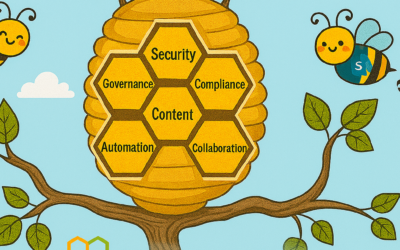Being a Microsoft Office 365 Partner am keen to follow any news concerning feature changes and updates to Office365. Microsoft announced via this blog, that Office 2013 clients’ connections to commercial Office 365 services will not be supported after October 13, 2020. After this date, ongoing investments in the Office 365 cloud services – including Exchange Online, SharePoint Online, and OneDrive for Business – will proceed based on post-Office 2013 requirements.
Microsoft has recommend that organisations with Office 2013 clients consider migrating to Office 365 ProPlus.
Support for Office 2016 and Office 2019 connections to Office 365 cloud services will continue until October 2023.
Microsoft will not take any active measures to block older Office clients, such as Office 2013 and Office 2010, from connecting to Office 365 services. However, legacy clients attempting to connect to a modern, always up- to- date cloud service may experience performance and reliability issues. Customers will face an increased security risk, and may find themselves out of compliance depending on specific regional or industry requirements.
There are a number of places Microsoft suggest you check to prepare:
- SCCM Product Lifecycle dashboard allows you to see which versions of Office are running on your desktops, to determine which will need updated Office apps to help ensure a seamless connection to Office 365 services
- Office 365 ProPlus Upgrade Readiness report on the Office 365 client management dashboard helps to identify desktops in your organization that are ready to upgrade to Office 365 ProPlus with high confidence.
Use these dashboards to identify users on Office 2010 and Office 2013 clients, deploy Office365 ProPlus or a supported version of Office perpetual to those desktops, and ensure that they will have supported access to Office 365 services after October 13, 2020.
My comment:
There are a lot of clients using Office 2013 clients still (and even post October 2020), particularly related to InfoPath 2013. As you know, InfoPath has been used for forms and in conjunction with Microsoft Designer 2013 to wrap around business processes to enable automation of processes. Of course, there are suggested replacements for those products in the form of Microsoft PowerApps, Microsoft Flow, plus of course Workflows in SharePoint There are other products out in the market place already filling this space, such as Nintex, K2 and others. It is vital therefore to consider not that support will not be available to resolve Office 2013 product issues post October 2020, but also security implications (meaning no further security patches, for example), past that date. My suggestion in automation is always to consider service delivery which is an all-encompassing process (implementation, deployment, systems life cycle, and information protection). That means going forward a number of on-going tasks are needed:
- Review any automation products that supports organisation process.
- Select and engage replacement products that are supported.
- Ensure that legacy products monitoring is high and immediately address and put controls in place for them, particularly for critical business services in the organisation.






